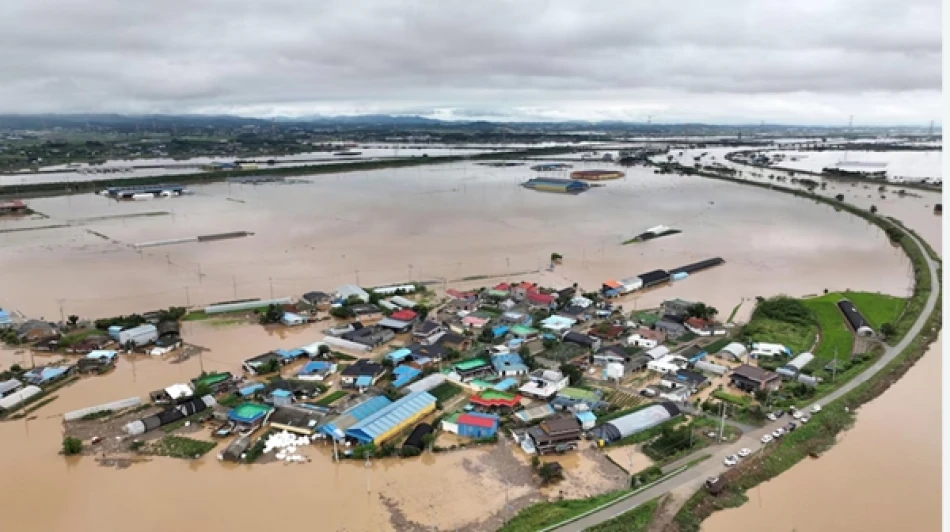
Torrential Rains Paralyze South Korean Capital and Surrounding Region
Seoul Battles Second Day of Catastrophic Flooding as Climate Extremes Test South Korea's Urban Infrastructure
South Korea's capital region is grappling with severe flooding for the second consecutive day, claiming at least one life and forcing over 1,000 residents to evacuate as torrential rains transform city streets into muddy rivers. The disaster highlights growing concerns about urban preparedness for increasingly extreme weather events across East Asia's megacities.
Scale of the Disaster
Rainfall reached between 250-300 millimeters across Seoul and surrounding cities including Paju, Incheon, and Gimpo by Thursday morning. The deluge has overwhelmed urban drainage systems, turning major thoroughfares into impassable waterways where vehicles sit stranded and residents scramble to salvage belongings from flood-damaged homes.
Emergency responders have rescued at least 145 people while handling hundreds of reports of road disruptions. The Ministry of Interior and Safety reported that electrical power has been restored to approximately 4,000 homes after overnight outages, though infrastructure damage continues to mount.
Government Response and Public Safety Measures
Authorities have issued comprehensive flood and landslide warnings for areas near rivers, streams, and hills. The response includes closing dozens of riverside parks and over 100 mountain hiking trails, while emergency alert systems send text warnings about flooding, landslides, and structurally compromised buildings.
Notably, air travel has remained largely unaffected, suggesting Seoul's Incheon International Airport infrastructure has withstood the immediate impact better than ground-level urban systems.
A Growing Pattern of Extreme Weather
This flooding event reflects broader climate trends affecting Northeast Asia, where rapid urbanization meets increasingly volatile weather patterns. South Korea's dense metropolitan areas, built largely during decades of economic growth, now face infrastructure stress tests that weren't anticipated during their original construction.
Regional Context
Similar extreme rainfall events have struck other major Asian cities in recent years, from Tokyo's record-breaking typhoons to Beijing's devastating floods. Seoul's experience mirrors challenges faced by megacities worldwide as traditional drainage and flood control systems prove inadequate for new climate realities.
Economic and Infrastructure Implications
Beyond immediate human costs, the flooding threatens South Korea's position as a regional business hub. The capital region houses major technology companies, financial institutions, and manufacturing facilities that depend on reliable infrastructure. Extended disruptions could ripple through supply chains already strained by global economic uncertainties.
The government's ability to rapidly restore power to thousands of homes demonstrates institutional capacity, but also reveals the vulnerability of urban electrical grids to water damage. This vulnerability carries particular significance for South Korea's digital economy and its role as a technology leader.
Looking Ahead
As the Korean Meteorological Agency warns that heavy rains will continue affecting the greater capital area, the immediate focus remains on emergency response. However, this disaster will likely accelerate discussions about long-term urban resilience planning, infrastructure investment, and climate adaptation strategies that other developed nations are also grappling with in an era of extreme weather.
Most Viewed News

 Layla Al Mansoori
Layla Al Mansoori






